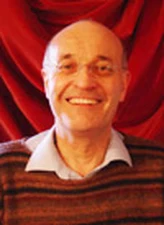Stanley W.H. Cowley

The 2006 Julius Bartels Medal is awarded to Stanley W.H. Cowley for his outstanding contributions to solar system plasma physics, particularly the physics of magnetic reconnection and its significance to planetary magnetospheres and ionospheres.
Professor Stanley W.H. Cowley is one of the outstanding scientists of his generation. His work in the field of space plasma physics encompasses a breadth and depth that is incomparable. His work stretches from developing a time dependent model of the driving of ionospheric convection, to particle dynamics in the tail and at the dayside magnetopause, to solar wind-comet interactions and to planetary magnetospheric science. In all these areas his work has proven to be seminal in our understanding of the physical processes involved.
Stan’s work on the process of reconnection at the dayside magnetopause and its consequences in the magnetosphere and ionosphere is his major contribution and for which he is probably best known. While working on the problem of transient reconnection (flux transfer events) at the dayside magnetopause, Stan predicted the its signatures in the particle distribution functions at low altitude. These so-called “Cowley D” distribution functions are a direct observable proof of the importance of reconnection, and were subsequently observed. This theoretical work now underpins much of our current understanding of boundary layer processes. Stan also recognised that there should be signatures in the ionospheric flow associated with flux transfer events. Working initially with the EISCAT radars and with the AMPTE and ISEE spacecraft, and more recently with the SuperDARN radars and Equator-S and Cluster, he developed a new understanding of the dynamics of the process. His model for flow excitation by transient reconnection has lead to a major change in our thinking away from the steady state view of magnetospheric convection, to a time dependent system. This is now the framework within which we understand much of solar wind-magnetosphere-ionosphere coupling.
Stan’s work on space plasma processes are not limited to the Earth’s environs, but extend also to other solar system objects. He participated in the first comet fly-by of P/Giacobini-Zinner by the ISEE-3/ICE spacecraft in 1985. Recently his attention has focused on solar wind-magnetosphere-ionosphere interactions in the rapidly-rotating magnetospheres of Jupiter and Saturn. His particular interest has been the origins of auroras on these planets, utilizing the recently available observations from the Galileo and Cassini missions as well as auroral imaging by the Hubble Space Telescope.
Stanley W.H. Cowley is famous for his clear, thoughtful and insightful presentations and he is much in demand as an invited speaker at all major conferences. He is an excellent teacher who is capable of illustrating both the theoretical concepts and the observational results and challenges of the space plasma phenomena. Stan’s leadership has produced excellent scientific achievements within his groups both earlier at Imperial College and presently at the University of Leicester.
Stan is clearly a leader in his field and one of the people who have made major breakthroughs over the field of solar terrestrial sciences in the last 30 years. It is proposed that the 2006 Bartels medal of the European Geophysical Union be awarded to Stanley W. H. Cowley for his outstanding contributions to solar system plasma physics, particularly the physics of magnetic reconnection and its significance to planetary magnetospheres and ionospheres.
